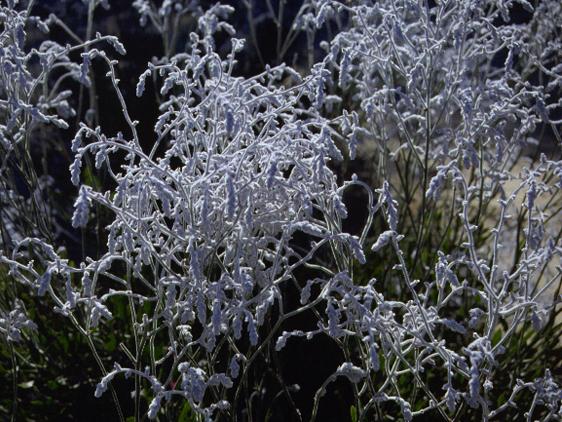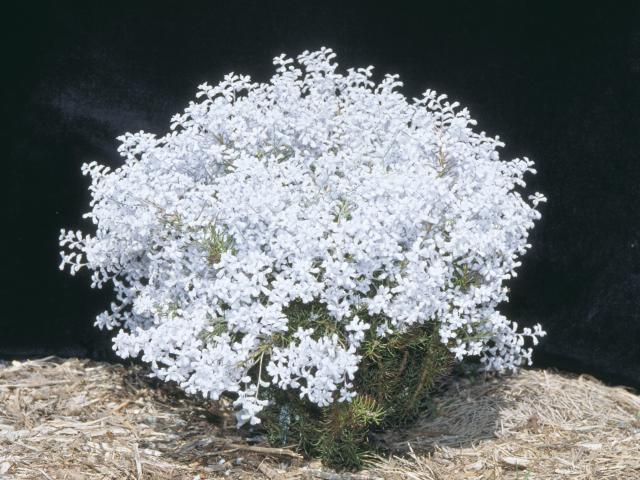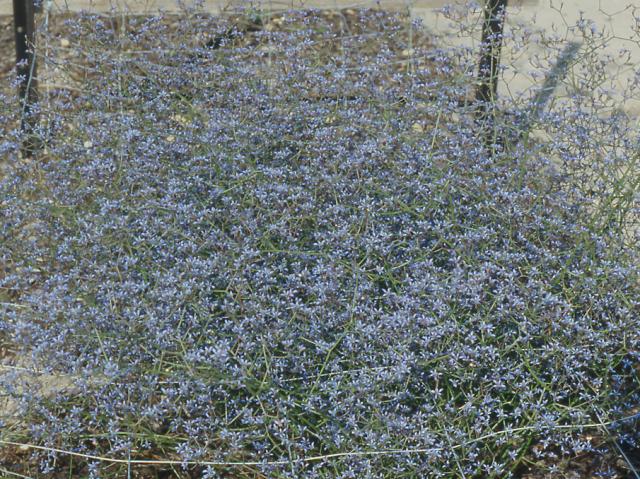Planting and establishment
Weed control needs to be maintained during establishment to ensure plant survival.
Weedmat® can be used, while laying 75 to 100mm of bark mulch aids establishment, suppresses weeds, conserves soil moisture and reduces soil temperature during summer.
The use of covers such as ‘grow cones’ or similar tree guards aids establishment, particularly on windy sites, and can discourage native animals from nibbling young foliage. Transplants should be greater than 10cm high.
Planting density depends on species, varying from 3300 to 9500 plants per hectare.
For C. eatoniae, C. caeruleum and C. incurvum, plant in double rows, 0.6m apart and 0.7 to 1m between plants on a staggered grid. For other species of smokebush, plant in single rows with 1m between plants in beds 3m apart.
Fertilisers
Smokebushes have low requirements for nutrients, particularly phosphorus, and also tolerate low levels of micro-nutrients, particularly manganese and zinc.
At planting, spread 10g of a slow release low phosphorus fertiliser such as ‘osmocote’ or ‘nutricote’ (low P) on the soil surface adjacent to plants.
Once established (two to three months) plants require a regular feed, preferably through the irrigation lines, such that they receive 65–90kg/ha/year nitrogen, 60–90kg/ha/year potassium, 8–12kg/ha/year phosphorus and 7–10kg/ha/year calcium, together with a balance of trace elements.
Irrigation
Smokebush should be planted into moist soil and watered regularly during establishment using drippers, particularly on sandy soils.
In summer, watering may need to be split into three applications per day, best done using an automatic watering system.
Once established, blue smokebush species are low water users (50% evaporation replacement or 4 litres per day per plant in summer). White/grey smokebush are higher water users (60% evaporation replacement or 5 litres per day in summer).
Trellising
Conospermum eatoniae need to be supported in their first two years of growth to prevent wind damage, achieved by supporting plants on 15 x 15cm square wire trellis or flower mesh (Cyclone®) when 15 to 20cm high or two to three months after planting.
White smokebush may need staking in its first year of growth but the stakes should then be removed to strengthen the plant stem.
Pruning
Smokebush must be pruned in the first year of growth to develop a good productive branch structure in white smokebush, or to encourage new stem production in blue smokebush.
For white smokebush, this is done by cutting back new branches to 10–15cm from the main stem, leaving green growth below the cut. In the second and subsequent years, this process is repeated but on the secondary and tertiary branches. Stem production should increase up to five fold per year.
For blue smokebush, all new stems should be pruned off after flowering to 10–20cm once new stems have appeared, taking care to leave new stem growth on the plant.
Pests and diseases
Very few pests attack smokebush and, except for very late flowering selections, it is rare for flowers to harbour large insect loads that may cause a problem with quarantine.
Caterpillars (Lepidoptera) may attack smokebush and this can cause stems to collapse, particularly in C. eatoniae and C. caeruleum.
Catasarcus weevil can cause leaf damage on C. triplinervium. These pests can usually be controlled by strategic sprays of permethrin or alpha-cypermethrin. Thrips (Thysanoptera) in flowers may need to be sprayed with fluvalinate or similar insecticides before picking.
Conospermum is susceptible to Phytophthora spp. or dieback and Pythium. Test soil and nursery stock before planting to avoid these diseases. Affected plants seldom recover but applications of Fosject® may be beneficial.




